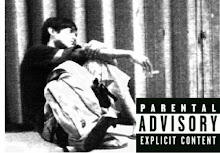Uprock
A related dance form which influenced breaking is Uprock also called Rocking or Brooklyn rock. Like toprock, uprock is also performed while standing. The difference is that uprock is a war dance that involves two dancers who mimic ways of fighting each other using mimed weaponry in rhythm with the music. Uprock as a dance style of its own never gained the same widespread popularity as breaking, except for some very specific moves adopted by breakers who use it as a variation for their toprock.When used in a b-boy battle, opponents often respond by performing similar uprock moves, supposedly creating a short uprock battle. Some dancers argue that because uprock was originally a separate dance style it should never be mixed with breaking and that the uprock moves performed by breakers today are not the original moves but poor imitations that only show a small part of the original uprock style.Battles
It has been stated that breaking replaced fighting between street gangs.On the contrary, some believe it a misconception that b-boying ever played a part in mediating gang rivalry. Both viewpoints have some truth. Uprock has its roots in gangs.Whenever there was an issue over turf the two warlords of the feuding gangs would uprock. Whoever won this preliminary battle would decide where the real fight would beThis is where the battle mentality in breaking and hip-hop dance in general comes from."Sometimes a dance was enough to settle the beef, sometimes the dance set off more beef."Crew versus crew battles are common in breaking. Battles are dance competitions between two individuals or two groups of dancers who try to out-dance each other. They can be either formal or informal but both types of battles are head to head confrontations. They can take the form of a cypher battle or an organized battle. A crew is a group of b-boys/b-girls who dance together. A few of the most well known crews are the Rock Steady Crew, Last For One, Super Cr3w, Gamblerz, Mortal Combat, Flying Steps, and Massive Monkeys. B-boy crews such as the Rock Steady Crew and the New York City Breakers changed breaking into a pop-culture phenomenon when they received a large amount of media attention by battling each other in public at the Lincoln Center in 1981.
Informally b-boying began with the cypher, the name given to a circle of breakers (and casual onlookers) who take turns dancing in the center. There are no judges, concrete rules, or restrictions in the cypher, only unspoken traditions. Although participants usually freestyle (improvise) within a cypher, battling does take place. This was the origin of b-boy battles and it is often more confrontational and personal. Cypher dancing is more prevalent in communities with an emphasis on what is regarded as authentic and traditional hip-hop culture. Battling "in the cypher" is also a method of settling differences between individual dancers or crews.
Organized battles set a format for competition such as a time limit or a cap on the number of participants. Organized battles also have judges who are usually chosen based on their years of experience, level of cultural knowledge, contribution to the scene, and ability to judge in an unbiased manner. On occasion organizers invite judges from outside the breaking community and these events (jams) are sometimes met with disapproval from b-boys/b-girls. Organized battles are publicized to a much greater extent than informal events. They include famous international level championships such as Battle of the Year, UK B-Boy Championships, Red Bull BC One, Freestyle Session, and R16 Korea. However, the trend in recent years to place excessive emphasis on organized battles may detract from the spontaneous aspect of the culture that is emphasized in cypher dancing.



Tidak ada komentar:
Posting Komentar